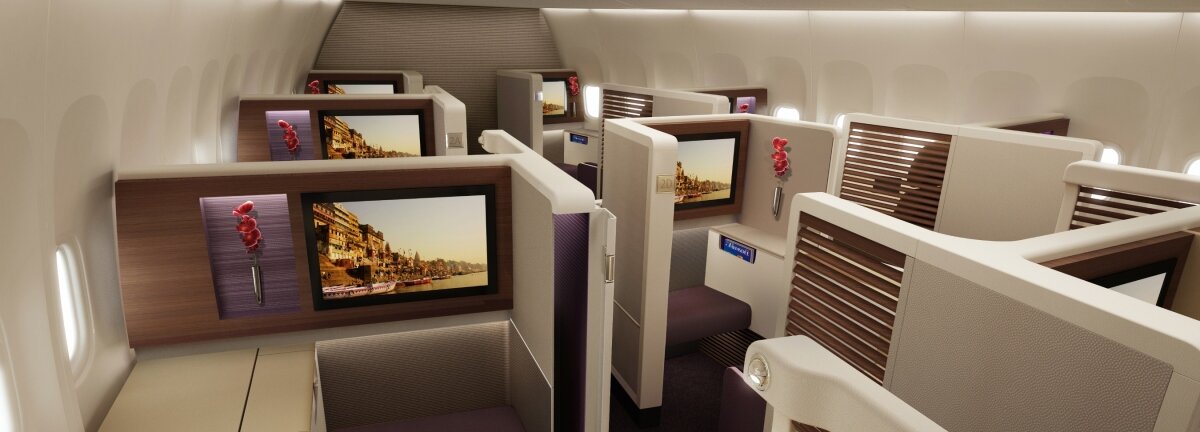Q&A: Paul Priestman on product design

Paul Priestman is co-founder of PriestmanGoode, a leading global design and brand experience consultancy that specialises in transport and aviation. He has built his reputation through award-winning future concepts and has been voted one of London’s 1,000 most influential people by the Evening Standard. As our soon to be announced Design Council Spark finalists are getting deep into their 20 week accelerator programme, Paul discusses the vital importance of product design.
What do you see as the role of the product designer or inventor past/present/future?
Fundamentally, the role of the designer or inventor has and will always be about making things better, particularly if you look at the areas that PriestmanGoode works in, large industrial design projects like aircraft and public transport. We’re designing things that will be in service for up to 50 years, so we have to pre-empt tomorrow’s problems and find those solutions today.
We have to pre-empt tomorrow’s problems and find those solutions today.
Changing demographics is an important part of that. We know that age expectancy is increasing around the world and health problems like obesity mean that more people are likely to have mobility issues in the future. So our role as designers is to think of design vehicles that will be able to accommodate growing numbers of less mobile passengers. It’s also about thinking of future technologies that are likely to become readily available and designing vehicles that are flexible enough to incorporate these new developments, as and when.
What is your favourite product and why?
A few years ago I designed a water saving device called the Waterpebble. It’s a simple concept - it acts as a reminder to use less water in the shower. I had the idea when I saw a sign in a hotel bathroom saying ‘please use water sparingly’.
The Waterpebble measures the amount of water going down the plug hole and, using your first shower as a benchmark, uses a series of warning lights to reduce your time incrementally until you reach three minutes – the recommended length of time for a shower. There’s no alarm, it’s just a gentle reminder. And because it guides you to reduce your shower time by a few seconds each day, it instils an intuitive reduction in water usage over time.
What new product does the world need right now, if any?
There are enough badly designed products in the world that could do with being re-designed and/or recycled. A desire to improve on existing products is what inspired me to become a designer when I was young, and still drives me today.
I’ve always been inspired by creative new uses that people can find for old products.
I’ve always been inspired by creative new uses that people can find for old products. One of my favourite examples is the many plastic bottle scarecrows that you see in the countryside in Asia. Rather than disposing of the mundane, everyday plastic bottle, people have come up with a practical, long-term use for it.
If you look at the rate of consumption in product and industrial design, I find it worrying that so many products are being designed to be out of fashion within a couple of years, thereby encouraging consumers to buy new again. This is not a sustainable approach, and I think designers and manufacturers need to be the ones driving change in this area. Part of the issue is that consumers, and in some cases even parts of the industry, aren’t aware of the huge waste of resources that occurs in the process.
A great initiative was launched by the Royal Society for the Encouragement of the Arts (RSA) a couple of years ago called The Great Recovery, which was about highlighting the issues surrounding ‘take, make and dispose’ manufacturing and encouraging a more circular approach to design.
The launch video showed landfills packed with discarded consumer goods like refrigerators and washing machines. These had parts that were still in functioning order (like batteries), but because of the way the products were designed those functioning parts couldn’t be recycled, causing a huge waste of resources.
The Great Recovery project argues for closer collaboration between designers and those working on different parts of the manufacturing and disposal process. This can help all involved to better understand how products can be designed in such a way to make the best use of resources, in both the short and long term.
In what ways do product and industrial design cross-over?
For me they’re one and the same. PriestmanGoode works predominantly in industrial design, on large infrastructure projects like high speed trains and airplanes, but we still design products, and our background as a company is in product design. Whether you’re designing a smartphone, a new tube train or an aircraft seat, the motivation is the same: to design something that is beautiful and efficient to manufacture, run and maintain, as well as intuitive to use.
Design is about people.
This last point is particularly important: at the end of the day, design is about people.
Paul will be sharing his insights as part of an expert line-up of speakers at our upcoming Leading Business by Design Summit.
Subscribe to our newsletter
Want to keep up with the latest from the Design Council?
